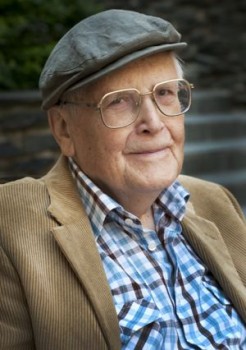Archive for March, 2014
Homeward bound!
29 March 2014 | This 'n' that

Jukka the osprey: sadly, his fate remains unknown. Photo: Hannu Vainiopekka
Snow is now, unusually for so early in the year, long gone from more than half of Finland. Bears are waking up and emerging from their winter lairs: spring is definitely in the air!
So are birds: the latest news from Cameroon is that on 26 March Ilmari caught his last African fishes and started winging his way to southern Finland.
Ilmari is an osprey: you may remember him – we reported his endeavour to cross continents on his way to Africa in 2012, asking you to watch this space. Well, the raptor is still doing fine, and his journey can be followed on the Finnish Museum of Natural History’s Luomus website. More than six thousand kilometres and a month later he will hopefully be spotted fishing on his home lakes in Hattula.
Let’s keep our fingers crossed for Ilmari. The fates of his compadres Pete, Eikka and Jukka are unfortunate: these great travellers perished on their particularly long and dangerous migration routes. Their stories are reported here.
Fan-male?
29 March 2014 | This 'n' that
 It is one of the enduring peculiarities of Finnish culture, along with the national enthusiasms for heavy metal music and the tango, that Tom of Finland, an erotic artist who specialised in stylised pencil images of muscular and well-endowed men wearing tight or little clothing, should be regarded as a national treasure.
It is one of the enduring peculiarities of Finnish culture, along with the national enthusiasms for heavy metal music and the tango, that Tom of Finland, an erotic artist who specialised in stylised pencil images of muscular and well-endowed men wearing tight or little clothing, should be regarded as a national treasure.
Even more startling, according to our friends abroad, is the news that a collection of Tom’s images is to be issued as postage stamps in September this year, when an exhibition opens in the Postal Museum in Tampere. ‘Sealed with a Secret – Correspondence of Tom of Finland’ displays Laaksonen’s correspondence from the early 1940s to 1991.
As the Finnish post office, Itella Posti, remarks in its press release, Tom of Finland, or Touko Laaksonen (1920–1991), is one of the most well-known Finnish artists around the world. The images selected – which include a pair of buttocks with a moustached face peeking out from between the legs and a man in military uniform entwined with a naked one – stick to the tamer side of Tom’s work, but their stereotypical homoeroticism will nevertheless be, let’s say, striking additions to the envelopes on which they appear.
According to Timo Berry, the graphic artist who made the selection, the stamps portray ‘a sensual life force and being proud of oneself. There is never too much of that in this northern country.’
Opinions will differ as to the artistic merits of Tom of Finland’s work, but one thing is certain: it’s decidedly top-shelf material. The Finnish post office website features a discussion of whom one would send which stamps to: you wouldn’t, obviously, send Tom to your maiden aunt in the countryside, but the conversation doesn’t examine the fact that the images will not only be viewed by the addressee. How would you explain the pictures to your small children, for example?
Postage stamps are, traditionally, regarded as an expression of national identity – in that case it’s debatable what these are expressing, as Finland is not conspicuously friendly to the gay community. There is no gay marriage, and you can only legally change your gender after surgical sterilisation.
So why issue Tom of Finland as public art? We’re stumped. (On the other hand, we’re not convinced you need to regard stamps as an expression of national identity at all…)
Answers on a postcard, please. You choose the stamps. (Tom’s stamps are self-adhesive, by the way. You don’t have to, ahem, lick their backsides.)
Remembrance
29 March 2014 | This 'n' that
 This year is the centenary of Tove Jansson (1914–2001), the painter, caricaturist, comic strip artist, illustrator and author of books for both children and adults, and, what made her name internationally, the creator of the Moomins. Today, her Moomin books are available in 40 languages.
This year is the centenary of Tove Jansson (1914–2001), the painter, caricaturist, comic strip artist, illustrator and author of books for both children and adults, and, what made her name internationally, the creator of the Moomins. Today, her Moomin books are available in 40 languages.
One sunny April day, walking through the atmospheric old Hietaniemi cemetery by the sea in Helsinki, a charming little bronze statue on top of a narrow granite column caught my eye.

Family grave: sculpture by Victor Jansson
It was a small child balancing on a ball, waving its arms and legs joyously in the air. On a closer look, there was something white attached to the statue: it was a tiny white plastic Moomin.
On the Janssons’ family grave the first little blue flowers had just risen to the surface to bask in the early spring sun. Tove’s father was the sculptor Victor Jansson, her mother was the cartoonist and artist Signe Hammarsten Jansson.
Perhaps one of Tove’s fans had chosen this way of paying homage to the creator of the unique Moomin universe.

Breadcrumbs and elephants
27 March 2014 | Essays, On writing and not writing

In this series, Finnish authors ponder the pros and cons of their profession. Alexandra Salmela operates in two languages, her native Slovakian and Finnish, which has become her literary language. Adventure and torture alternate as she attempts to shape reality into writing
I had started to write before I knew how. With fat wax crayons, in big stick-letters, I scratched my stories in old diaries. There were lots of pictures. From the very beginning, I wrote both poetry and prose. At 11 I didn’t finish my great sea-adventure novel, but at 12 I was already writing my memoirs. They, too, somehow remained unfinished.
Writing is… I wanted to write fun, but in the end I’m not quite sure about that. Writing is adventure and liberation and terribly hard work. Torture of the imagination and the pale copying of real events. Reading is a way to escape reality and at the same time a route to the sources of reality. By writing, you can shape reality in your own image: it’s your own character fault if the result is ugly and depressing.
If I were to write a pink world, it would be so sugary that it would make everyone sick, me and other people. More…
Jorma Ollila – Harri Saukkomaa: Mahdoton menestys. Kasvun paikkana Nokia [Impossible success. Nokia as a growth point]
27 March 2014 | Mini reviews, Reviews
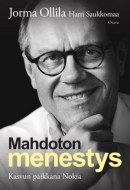 Mahdoton menestys. Kasvun paikkana Nokia
Mahdoton menestys. Kasvun paikkana Nokia
[Impossible success. Nokia as a growth point]
Helsinki: Otava Publishing Company , 2013. 480 pp., ill .
ISBN 978-951-1-18117-0
€39.60, hardback
One of the most fascinating stories in Finland’s recent history is the rapid rise of Nokia, thanks to the establishment of its mobile phones as a global brand in the 1990s, the decline in the company’s success in the 2000s, and its eventual abandonment of mobile phones. The boom was personified by the company’s talented CEO Jorma Ollila. His interesting memoirs are readily accessible to a non-specialist readership. When Ollila began work at the Nokia conglomerate in 1985 he had already shown an aptitude for business. He served first as the company’s director of finance, then as leader of the mobile phone unit, became managing director, and finally CEO from 1999 until 2006. Ollila decided to weed out the operations that were in difficulty and to focus on mobile phones and networks. With the support of a good management team, Ollila proved to be an energetic leader who knew how to share responsibility and also inspire and create trust. In his memoirs he analyses both the company’s successes and its mistakes and losses in the period up to 2010. Ollila stepped down from the post of chairman in 2012.
Translated by David McDuff
Potentially translatable
27 March 2014 | In the news
The daily paper Aamulehti, published in Tampere, and the bookshop Tulenkantajat (‘The torch-bearers’), in the same city, founded in 2013 a prize called Tulenkantajat* for a Finnish-language writer whose book, published in the previous year, is estimated to have the ‘best export potential’. The first jury selects four to six candidates, the second chooses the winner. The prize is worth €5,000.
The winner of the 2014 prize was announced on 24 March: it is the graphic novel Vain pahaa unta (‘Just a bad dream’, WSOY) by the father-daughter team Ville Tietäväinen and Aino Tietäväinen; see our feature; we have also reviewed three other finalists on the list of six.
The remaining finalists were the crime novel Niiden kirjojen mukaan teidät on tuomittava (‘You will be judged according to your books’, Atena) by Kai Ekholm, Piippuhylly (‘The pipe shelf’, WSOY), short stories by Katja Kettu, the novel Hotel Sapiens (Teos) by Leena Krohn, the novel Herodes (‘Herod’, WSOY) by Asko Sahlberg and Kirahviäiti ja muita hölmöjä aikuisia (‘The giraffe mummy and other silly adults’, Teos), a picture book for children by Alexandra Salmela and Martina Matlovičová.
Who can say whether the books on this shortlist will be ‘exported’, i.e. translated prolifically? Time will tell.
*) The mid 1920s saw the foundation of a group of writers called the Torch-Bearers; it first published intensely personal nature poetry but later began to import European influences into Finnish literature. The Torch-Bearers aimed for the experience of citizenship of the world as unity between people without denying one’s own fatherland or nationality. (See Vesa Mauriala’s article here.)
At your service
19 March 2014 | Extracts, Non-fiction
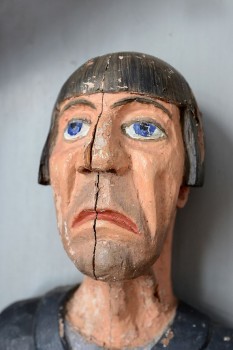
Melancholy man: detail of the almsman in Pomarkku, carved by Artturi Kaseva in the 1920s. Photo: Aki Paavola
Old men carved of wood have stood outside churches since the 17th century, begging for money to be given to the poor and the sick of the parish. These almsmen, or men-at-alms, mostly represented a disabled soldier; the tradition is not known elsewhere. Some 40 of the still surviving almsmen (there is one almswoman) were assembled for an exhibition in Kerimäki – in the world’s largest Christian wooden church – in summer 2013. The surviving specimens were hunted down and photographed by Aki Paavola for the book Vaivaisukkojen paluu (‘The return of the almsmen’). Otso Kantokorpi asks in the title of his introduction: are men-at-alms pioneers of ITE (from the words itse tehty elämä, ‘self-made life’; the English-language term is ‘outsider art’) or a disappearing folk tradition?
Many a church or belfry wall, particularly in Ostrobothnia, has been decorated – and is often still decorated – with a wooden human figure. Often they stand beneath a decorative canopy, sometimes accompanied by an encouraging phrase: He that hath pity upon the poor lendeth unto the LORD. They have been called men-at-alms or boys-at-alms. More…
Arne Nevanlinna: Heta
14 March 2014 | Mini reviews, Reviews
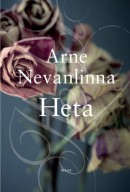 Heta
Heta
Helsinki: WSOY, 2014. 276 pp.
ISBN 978-951-0-40174-3
€34, hardback
The architect and writer Arne Nevanlinna (born 1925) published his first novel, Marie,in 2008; it became one of the six finalists for the Finlandia Prize of Fiction. His fourth novel, Heta, is set in Helsinki in the late 20th century. It depicts the Swedish-speaking Celerius family: Gustava’s seven children – three have died – and their spouses come to celebrate her 70th birthday. Noblesse oblige – the general’s widow is not wealthy, but Gustava has to keep up appearances, so she has four servants. One of them is the bright orphan girl Heta, too often called Clubfoot, because her left leg is shorter than the right, and who, to her surprise, finds out she can read people’s minds. When Gustava dies unexpectedly, poor Heta becomes a murder suspect. The plot takes surprising turns, and the epilogue, in which Heta herself is the narrator, presents the reader with even more revelations; love, it turns out, does conquer all. Nevanlinna’s depictions of the milieu and the era are colourful, and his narrative is laced with plenty of satirical comedy.
What’s translated?
14 March 2014 | This 'n' that

The database Finnish Literature in Translation, which details more than 7,500 works, with references to information on Finnish, Swedish and Sámi fiction and non-fiction translation, has been redesigned. Different search types are applicable, and the search results can be downloaded in Excel form.
Maintained and updated by FILI, the database offers information on book-length works as well as translation anthologies. Currently the oldest translation is from 1839. The database is trilingual: Finnish, Swedish, English.
So – if you’d like to know whether Tove Jansson’s Moomin books are available in your mother tongue, just look it up! (Tove can currently be read in 44 languages, from Albanian to Welsh.)
Below and above the surface
13 March 2014 | Extracts, Non-fiction
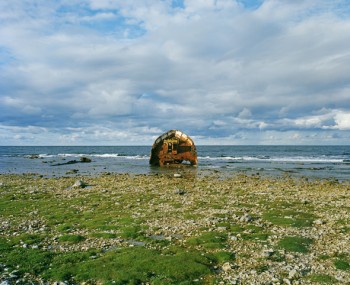
Fårö, Gotland, Sweden. Photo: Lauri Rotko
The Baltic Sea, surrounded by nine countries, is small, shallow – and polluted. The condition of the sea should concern every citizen on its shores. The photographers Jukka Rapo and Lauri Rotko set out in 2010 to record their views of the sea, resulting in the book See the Baltic Sea / Katso Itämerta (Musta Taide / Aalto ARTS Books, 2013). What is endangered can and must be protected, is their message; the photos have innumerable stories to tell
We packed our van for the first photo shooting trip in early May, 2010. The plan was to make a photography book about the Baltic Sea. We wanted to present the Baltic Sea free of old clichés.
No unspoiled scenic landscapes, cute marine animals, or praise for the bracing archipelago. We were looking for compelling pictures of a sea fallen ill from the actions of man. We were looking for honesty. More…
Tarmo Kunnas: Fasismin lumous. Eurooppalainen älymystö Mussolinin ja Hitlerin politiikan tukijana [The allure of fascism. European intellectuals as backers of the policies of Mussolini and Hitler]
13 March 2014 | Mini reviews, Reviews
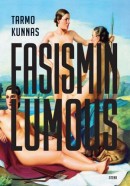 Fasismin lumous. Eurooppalainen älymystö Mussolinin ja Hitlerin politiikan tukijana
Fasismin lumous. Eurooppalainen älymystö Mussolinin ja Hitlerin politiikan tukijana
[The allure of fascism. European intellectuals as backers of the policies of Mussolini and Hitler]
Jyväskylä: Atena , 2013. 686 pp .
ISBN 978-951-796-933-8
€40, hardback
The most prominent fascist states in the period between the world wars were Nazi Germany and Mussolini’s Italy, but the ideology was reflected in the extremist movements of a number of European countries. The fascist movements could differ greatly, but their key feature was a strong nationalism that was both anti-democratic and anti-parliamentary. In his book, which at times is rather heavy going, Emeritus Professor Tarmo Kunnas examines the attraction of Fascist ideology for the European intelligentsia of the 1920s, 30s and 40s. He presents a nuanced view of the opinions of the period’s major intellectuals and detects the sources of their world outlook in factors like their philosophy of life. Their fascism rarely fitted in with party political programmes. Kunnas also sheds light on the fascist views of some of Finland’s cultural figures; according to him, in Finland genuine fascist groups did not really have much significance.
Translated by David McDuff
Funny stuff: best-selling books in February
13 March 2014 | In the news
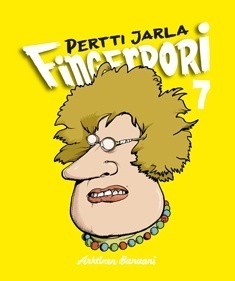 The list of best-selling books – compiled by the Finnish Booksellers’ Association – shows that in February comedy was popular among readers. Number one on the Finnish fiction list was Fingerpori 7 (‘Fingerborg 7’, Arktinen Banaani), the latest comics book by Pertti Jarla, featuring silly stuff taking place in the city of Fingerpori.
The list of best-selling books – compiled by the Finnish Booksellers’ Association – shows that in February comedy was popular among readers. Number one on the Finnish fiction list was Fingerpori 7 (‘Fingerborg 7’, Arktinen Banaani), the latest comics book by Pertti Jarla, featuring silly stuff taking place in the city of Fingerpori.
Riikka Pulkkinen’s new novel, a romantic comedy entitled Iiris Lempivaaran levoton ja painava sydän (‘Iiris Lempivaara’s restless and heavy heart’, Otava) which was originally published in a weekly women’s magazine, was number four. A satirical television series featuring two silly women devoted to dating and clubbing has also resulted in a book written by the two actresses, Heli Sutela and Minna Koskela: Anne ja Ellu lomamatkalla (‘Anne and Ellu on holiday’, published by Annen ja Ellun tuotanto) made its way to the seventh place. Number eight was Pertti Jarla’s Fingerborg 4!
However, number two was a first novel about problems arising in a religious family, Taivaslaulu (‘Heaven song’, Gummerus), by Pauliina Rauhala. Number three was a first novel by an immigrant Somali woman, Nura Farah: Aavikon tyttäret (‘Daughters of the desert’, Otava) tells the story of women in Somalia in the second half of the 20th century.
On the non-fiction list, among cookbooks and diet guides, books on how to maintain a hormonal balance or how to wield a kettlebell sold well. A new biography, Tove Jansson (Tammi), telling the life story of the Moomin genius (1914–2001), the artist, painter, author and cartoonist, was number seven; the author is Tuula Karjalainen. (The book will be published in several countries this year, a World English edition in December.)
At the top of the best-selling children’s books list is a book entitled Muumit ja tekemisen taika – ‘The Moomins and the magic of doing’ (Tammi). This ‘Moomin’ book is written by Clive Alan: we know absolutely nothing about him (he is absent from his publisher’s list of authors!) – except that the name is a pseudonym.
Well, as before, it is our opinion that all the Moomin books really worth reading were created by Tove Jansson herself.
Helsinki hundred
6 March 2014 | This 'n' that
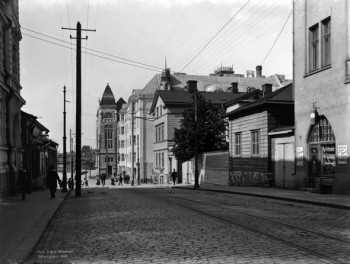
Into the city: Vilhonkatu Street, leading to the National Theatre and the Railway Station. Photo: Signe Brander, 1907. Helsinki City Museum / Finna
Photographer Signe Brander (1869–1942) was hired by the Helsinki City Council’s Board of Antiquities to record the fast-growing city for almost seven years between 1907 and 1913.
Signe was not keen on working indoors, so she must have been pleased to be able to get out into the streets. She chose to capture lively views of the town with people – passers-by, animals, children, flaneurs, people on errands (even though portraits were not her cup of tea either), in all seasons.
Brander’s thoroughly professional work can now be downloaded on the Internet: all of her 906 photos of Helsinki and its citizens a hundred years ago are available from Finna.
The National Digital Library – and its public interface Finna – project aims to ensure that electronic materials of Finnish culture and science are managed with a high standard, are easily accessed and securely preserved well into the future.
Unfortunately Signe Brander was not able to rest peacefully on her laurels. As her eyesight and health deteriorated, she was hospitalised in 1941. Then the war broke out, and when the patients were transferred to a mental hospital outside Helsinki, more than a hundred of them tragically died of hunger in 1942, Brander among them.
Bonfires in the garden
6 March 2014 | Fiction, poetry
Poems from Inga stjärnor i natt, sir (‘No stars tonight, Sir’, Schildts & Söderströms, 2012). Introduction by Jukka Koskelainen
With us on the cruise was
an old, old man.
We wondered what
he was doing there.
He sat at a table by himself.
Silent. Drinking water.
Never turned up at the cabaret
or the ballroom.
Once he asked the receptionist,
rumour had it, if it was possible
to go out into the fresh air,
there beneath the stars.
‘No stars tonight, sir!’
said the man in the hatch.
The old man wasn’t seen again
until we reached land.
Wonder what happened to him.
Not that it’s any of our business.
![]()

